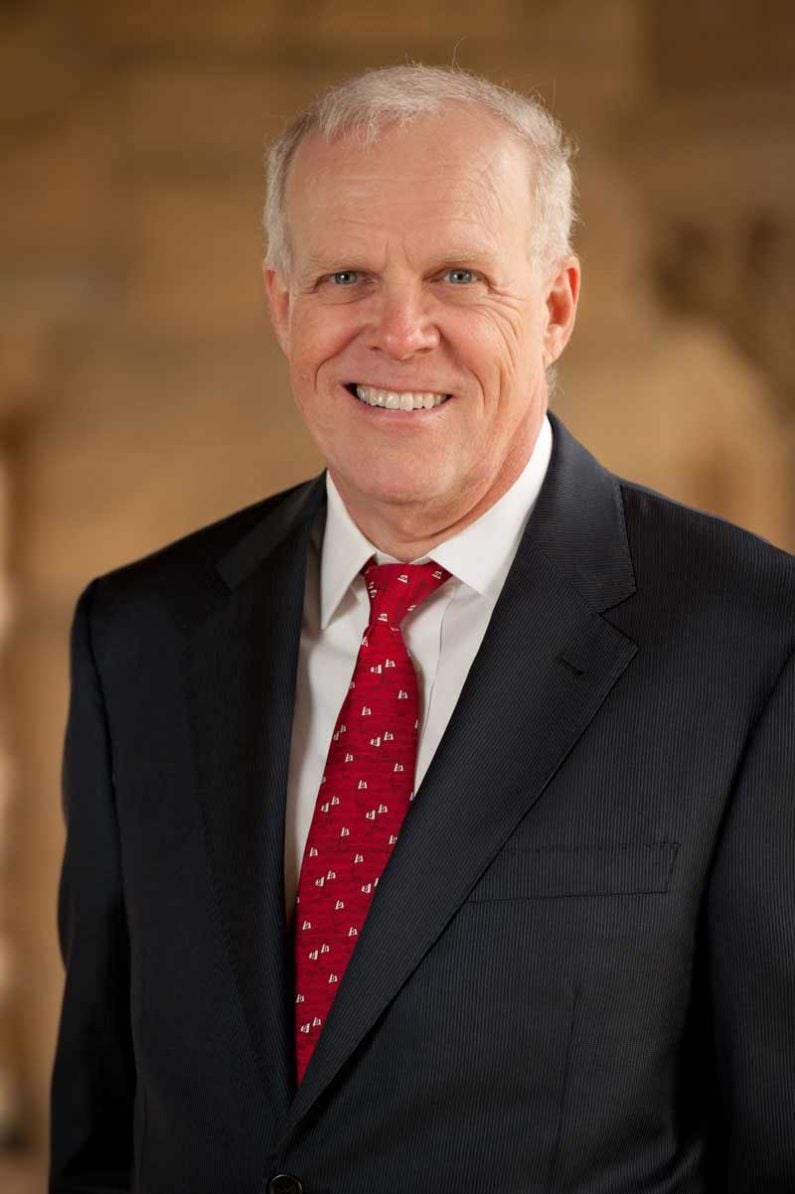John L. Hennessy elected to Royal Academy of Engineering
Hennessy, a pioneer in computer architecture, explains why the honor holds special significance.
John L. Hennessy, inaugural director of the Knight-Hennessy Scholars Program and president emeritus of Stanford, has been elected an international fellow of the Royal Academy of Engineering, the national academy for engineering in the United Kingdom.
Founded in 1976, the Royal Academy of Engineering brings together the most successful and talented engineers for a shared purpose: to advance and promote excellence in engineering. Earlier this week, the academy announced 50 new fellows, two international fellows, including Hennessy, and one honorary fellow.
Hennessy, a pioneer in computer architecture, said the honor held special significance because so many early pioneers in the field did their great work in England, from Alan Turing (1912-1954), a mathematician who conceived of modern computing and played a crucial role in the Allied victory over Nazi Germany in WWII, to Maurice Wilkes (1913-2010), a professor at Cambridge University who is considered the most important figure in the development of practical computing in the United Kingdom.
“I have had the pleasure of knowing many colleagues who are members of the Royal Academy of Engineering, including Wilkes, a colleague from Cambridge who I knew personally for many years,” Hennessy said. “It is an honor to join such an august group.”
Hennessy has won numerous awards for his work, including election to the National Academy of Engineering and the National Academy of Sciences. He is also a fellow of the American Academy of Arts and Sciences, the Association for Computing Machinery, and the Institute of Electrical and Electronics Engineers.
After stepping down as president of Stanford a year ago, Hennessy became the Shriram Family Director of the Knight-Hennessy Scholars Program, which is the largest fully endowed graduate-level scholarship program in the world. The program, which is currently located in the Littlefield Center, held a groundbreaking ceremony last spring for its future home, Denning House. Currently, the program is accepting applications for its first class of 50 scholars, who will begin their studies in the fall of 2018.
Hennessy joined Stanford’s faculty in 1977 as an assistant professor of electrical engineering. In 1981, he drew together researchers to focus on a technology known as RISC (reduced instruction set computer), which revolutionized computing by increasing performance while reducing costs. Hennessy helped transfer this technology to industry. In 1984, he cofounded MIPS Computer Systems, now MIPS Technologies, which designs microprocessors.
Hennessy, who rose through the academic ranks at Stanford and became a full professor in 1986, served as chair of the Department of Computer Science and took the helm as dean of the School of Engineering in 1996. He became provost in 1999 and was inaugurated as Stanford’s 10th president in 2000. He stepped down from the presidency in 2016.
As president, Hennessy fostered interdisciplinary collaboration, launching university-wide initiatives in human health, environmental sustainability, international affairs, the arts and creativity, and greatly expanding opportunities for multidisciplinary teaching and learning. Under his leadership, the campus underwent a physical transformation to support 21st-century research and teaching needs, including cutting-edge facilities for the Graduate School of Business, the Law School, the Science and Engineering Quadrangle, Stanford Medicine and the Arts District.

